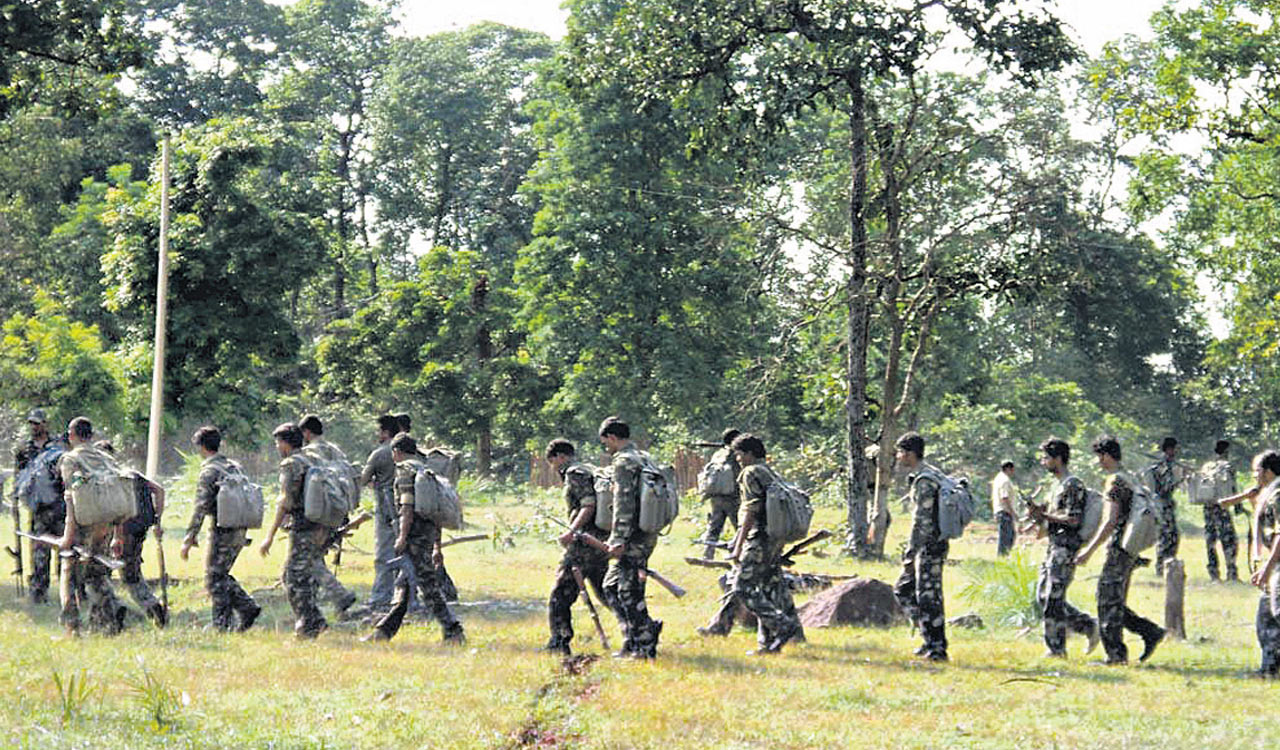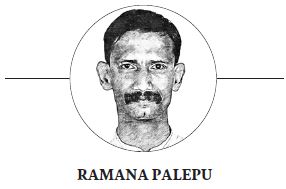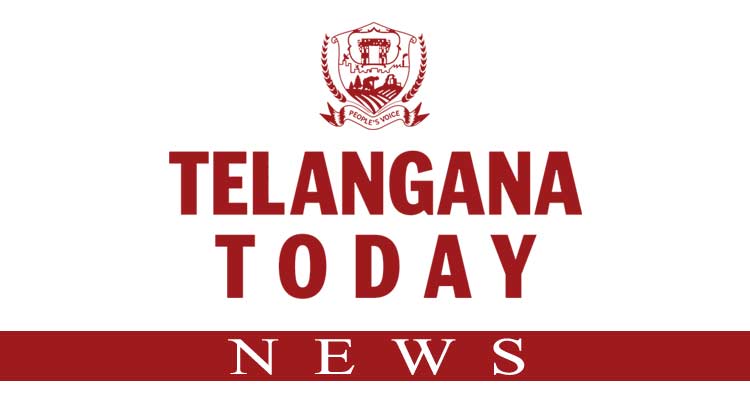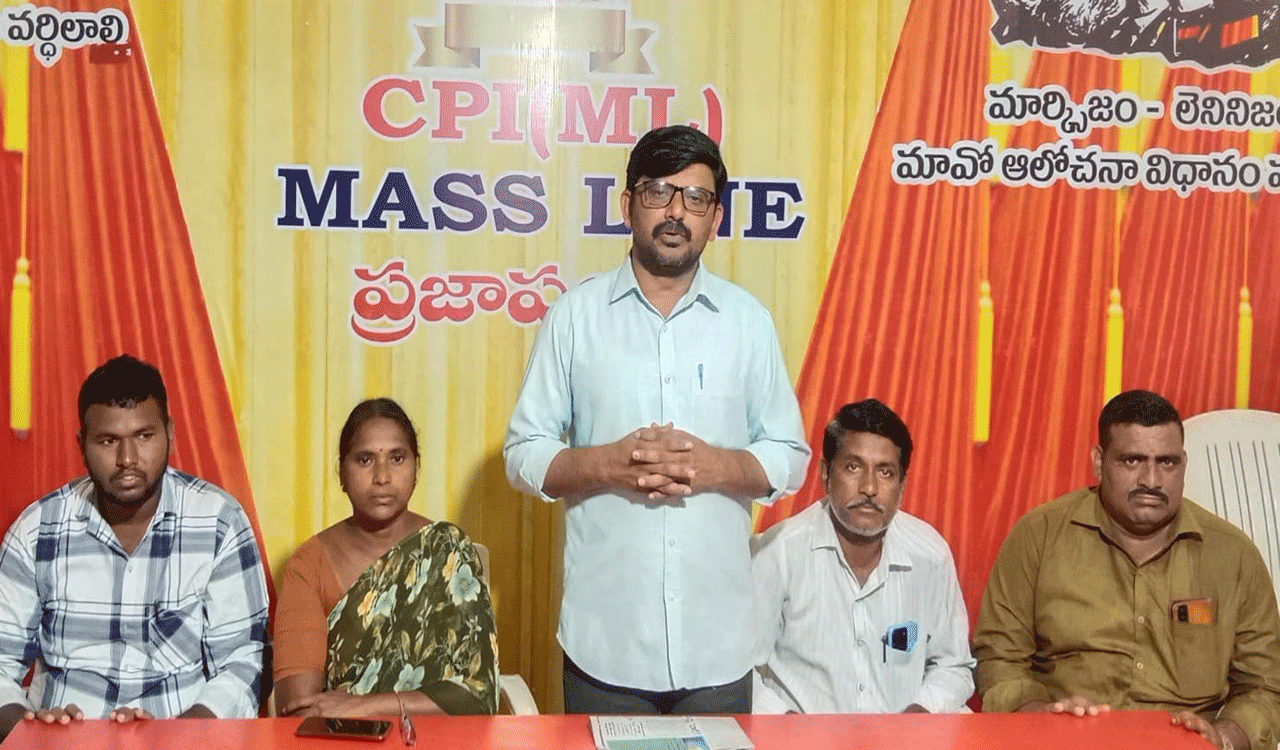Opinion: Twenty-five years after ‘Koyyuru Encounter’
To commemorate ‘Koyyuru encounter’, the naxalites announced formation of People’s Liberation Army on Dec 2, 2000

By PV Ramana
December 2, 2024, marks the 25th anniversary of the famous ‘Koyyuru encounter’ in which three Central Committee Members (CCMs) of the Communist Party of India — People’s War [CPI-ML (People’s War)], popularly known as PWG — were killed in the Koyyuru forests of Warangal district in 1999 in undivided Andhra Pradesh. Nalla Adi Reddy, Yerramreddy Santosh Reddy and Seelam Naresh were killed in an operation meticulously planned by Nalin Prabhat, then Superintendent (SP) of Karimnagar and currently DGP of Jammu & Kashmir.
To commemorate the ‘Koyyuru encounter’, the naxalites announced the formation of the People’s Liberation Army (PLA) on December 2, 2000. This encounter changed the face of the armed-revolutionary movement. It increased the morale of the police forces in the then-undivided Andhra Pradesh. The elite Greyhounds led the assault on armed guerrillas with unflinching support, encouragement and guidance from the police leadership. The police were equipped with sophisticated weapons and technological tools such as GPS and UAVs.
Greyhounds
The Greyhounds was given rigorous training to the extent that they can operate for a whole week independent of their base. Critically, the force has been kept young. They are trained to survive in thick and inhospitable jungles for several days with limited food and water, cross steep hill ranges, overcome several obstacles and walk for long distances at a stretch.
The Greyhounds acquired versatility and independently launched operations while they were earlier working together with the Central Reserve Police Force, which was then restricted to providing security to vital installations. Speed, strength, surprise and precision are its core capabilities.
The elite Special Intelligence Bureau (SIB), the anti-naxalite wing of the State police gather specific intelligence and works in tandem with the Greyhounds. As a well-known authority on the naxalite movement told this author: “They metamorphosed from the panicky reaction of ‘flight’ when exposed to an emerging situation to ‘fight’ through well-coordinated measures. This was helped in good measure when the political leadership decided to take the challenge head on.”
The battleground conditions changed so much that leaders and armed squads relocated to neighbouring Gadchiroli in Maharashtra and Bastar in Chhattisgarh. It is believed that those who were asked to work in North Telangana — their flagship guerrilla zone — considered it a ‘death warrant’.
The onslaught by the police forces compelled the cadres to surrender. The government unveiled an attractive ‘surrender and rehabilitation’ policy and actively encouraged surrender. Those who surrendered were seen as a ‘life gone waste’. Thus, the youth, who were once the driving force behind the revolutionary movement, no longer found it any more attractive and turned towards ‘careerism’. At the same time, development programmes and schemes put in place had a positive impact.
Unity Congress
Five years after the ‘Koyyuru encounter’, the PWG and the Maoist Communist Centre of India (MCCI) merged during what is known as the ‘Unity Congress’ on September 21, 2004, to form the Communist Party of India (Maoist), or Maoists in short. The merger itself occurred after several years and many rounds of negotiations between the PWG and MCCI.
Significantly, the two outfits came to see that ‘strength lies in unity’. This changed the profile of the revolutionary movement. Until then it was thought to be limited to parts of Telangana and pockets in Bihar, Jharkhand, Maharashtra, West Bengal and Odisha. Now, it has acquired a pan-India character. The combined armed strength of the two outfits stood at an estimated 6,000. The armed force of the Maoists was named the People’s Liberation Guerrilla Army (PLGA), which is guided by the Central Military Commission (CMC).
By 2007, the Ministry of Home Affairs (MHA) acknowledged that Maoists had spread to 190 districts. It is now limited to 35 districts. Violence by the Maoists peaked in 2010. In that year, the Maoists launched the most severe assault on the security forces killing 71 CRPF personnel in the Chintalnar forests of Bastar. By the end of November, fatalities in Maoist violence declined to 373 from a high of 1,169 in 2010.
Surrender and Rehabilitation
The Centre put in place a ‘security, development and surrender and rehabilitation’ mechanism. On the security front, it provides coordination between the various affected States, conducts periodic review meetings attended by police chiefs of affected State and extends financial assistance through Security Related Expenditure (SRE) and Fortified Police Stations, in addition to deploying Central Armed Police Forces (CAPFs).
Top naxals were killed in Koyyuru forests in 1999 in an operation meticulously planned by Nalin Prabhat, then SP of Karimnagar and currently DGP of Jammu & Kashmir
It has development schemes especially focusing on the 35 affected districts. The government has also issued ‘guidelines’ for ‘surrender and rehabilitation’ and has left it to the States to frame their own policy.
The affected States have made significant headway in addressing the Maoist challenge. Now they need to focus on not allowing the Maoists to re-emerge in areas from where they have been evicted, even while fighting them in their strongholds. There can be no laxity. The Maoists have a unique way of re-grouping and relocating to newer areas, just as they did in the aftermath of the ‘Koyyuru encounter’.

(The author is expert on Internal Security)
Related News
-
Cash reward handed over to seven surrendered Maoists in Kothagudem
-
Maoists accuse Chhattisgarh security forces of fake encounter; claim five victims were villagers
-
Gunfight breaks out between security forces, naxals in Chattisgarh’s Narayanpur
-
Civil society should condemn attacks on minority Hindus in Bangladesh: CPI (ML) Mass Line
-
Cartoon Today on December 25, 2024
2 hours ago -
Sandhya Theatre stampede case: Allu Arjun questioned for 3 hours by Chikkadpallly police
3 hours ago -
Telangana: TRSMA pitches for 15% school fee hike and Right to Fee Collection Act
3 hours ago -
Former Home Secretary Ajay Kumar Bhalla appointed Manipur Governor, Kerala Governor shifted to Bihar
3 hours ago -
Hyderabad: Organs of 74-year-old man donated as part of Jeevandan
3 hours ago -
Opinion: The China factor in India-Nepal relations
4 hours ago -
Editorial: Modi’s Kuwait outreach
4 hours ago -
Telangana HC suspends orders against KCR and Harish Rao
4 hours ago



